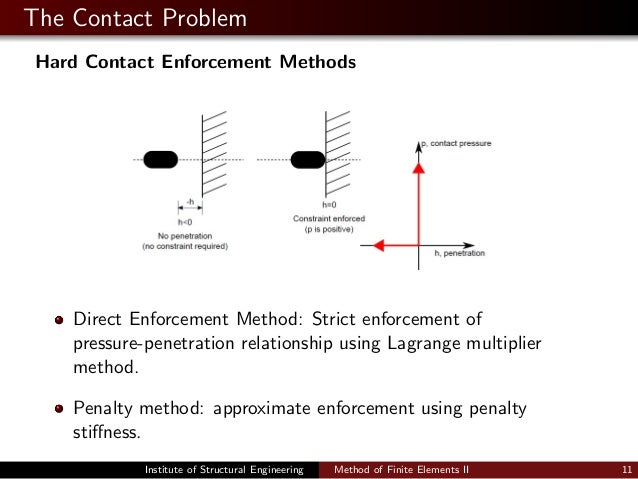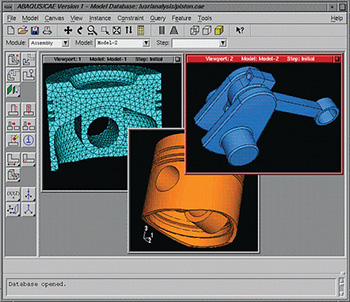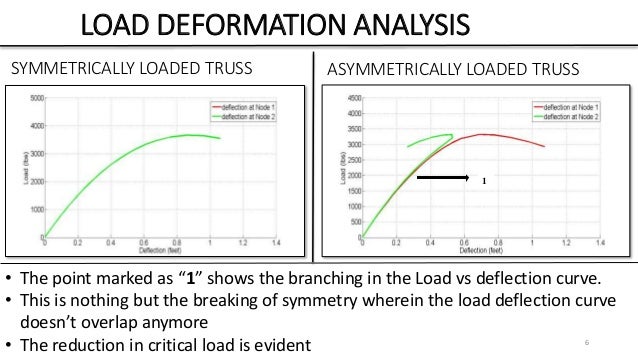The Abaqus documentation is provided in portable document format (PDF) on the documentation DVD as an optional supplement to the installable online documentation in HTML format. For information on installing the Abaqus HTML documentation, see “Abaqus HTML documentation installation details,” Section 2.2.

This appendix discusses accessing and using the Abaqus PDF documentation. The Abaqus PDF documentation is not meant as a replacement for the installable online HTML-format documentation. However, it has the following advantages:
Download viscoelastic model abaqus manual pdf - instruction on 1c.layuk.site. C3d8t abaqus manual pdf:: free for iPhone guide on pzbrlu.homingbeacon.net.
- Aircraft landing gear simulation using abaqus explicit:: manual google mobi free on 09.goranallew.site.
- Download single vs double precision abaqus manual pdf:: guidebook online Mobile on d.pricel.site.
Convenient portable reference.
Ability to print a range of pages, such as a section or chapter.
Higher quality printed output than that available from the HTML documentation.
Searchable alternative to the HTML documentation, particularly for situations where the HTML documentation is not searchable because it was installed with no web server.
The detailed, step-by-step instructions for using each of the Abaqus/CAE functions are available only in the HTML version of the Abaqus/CAE User's Manual and as context-sensitive help. They do not appear in the PDF version of the manual. The hyperlinks in context-sensitive help will not function if you have not installed the Abaqus HTML documentation.
More information about navigating and printing the Abaqus PDF documentation is available in Chapter 5, “Overview of the Abaqus PDF documentation,” of Using Abaqus Online Documentation.
TRANSCRIPT
The ABAQUS FAQ
THE ABAQUS FAQ ....................................................................... 0 1. GENERAL QUESTIONS ................................................................. 2 2. JOBS ...........................................................................................5 3. ELEMENTS ................................................................................10 4. ABAQUS - MESH .....................................................................14 5. ABAQUS - MATERIALS .............................................................16 6. ABAQUS - BOUNDARY CONDITIONS .........................................21 7. LOADING .................................................................................. 25 8. ABAQUS - PROCEDURES ......................................................... 34 9. ABAQUS - ANALYSIS ............................................................... 35 10. OUTPUT ..................................................................................41 11. ABAQUS/POST - GENERAL .....................................................47 12. ABAQUS/POST - CONTOURS.................................................. 52 13. ABAQUS/POST - MESH PLOTS................................................55 14. ABAQUS/POST - XY PLOTS ................................................... 58 15. ABAQUS/POST - VECTOR PLOTS.............................................61 16. ABAQUS/POST - PATH PLOTS ............................................... 62 17. ABAQUS/POST - VIEWS ......................................................... 63 18. ABAQUS/POST - HARDCOPY ................................................. 64 19. ABAQUS/PLOT...................................................................... 65 20. PRE PROCESSING USING PATRAN.......................................... 66 21. POST PROCESSING USING PATRAN..........................................67 22. PRE PROCESSING USING FEMGV............................................ 68 23. POST PROCESSING USING FEMGV.......................................... 69 24. ABAQUS - ERRORS ...........................................................................................................72

1. General QuestionsQ1.1 : How much disk space do I need?Minimum of 10 MBytes to run simple examples if using PATRAN for Pre or Post processing. Probably about 20 MBytes for medium sized problems. The amount of disk space required depends on the numbers of nodes/elements present in the mesh and the output frequency requested for outputting data to the *.fil, *.dat and *.res files. The following ABAQUS files are created in the user's home directory. *.dat, *.fil, *.res, *.msg, *.sta, *.log, *.job, *.023 (deleted at the completion of the ABAQUS job).
Q1.2 : What type of analysis can I do?The procedures available in ABAQUS are listed below (in alphabetical order) : BUCKLE COUPLED TEMPERATURE-DISPLACEMENT (steady state and transient) COUPLED THERMAL-ELECTRICAL (steady state and transient) DYNAMIC FREQUENCY GEOSTATIC HEAT TRANSFER (steady state and transient) MASS DIFFUSION (steady state and transient) MODAL DYNAMIC RANDOM RESPONSE RESPONSE SPECTRUM SOILS, CONSOLIDATION SOILS, STEADY STATE STATIC STEADY STATE DYNAMICS VISCO
Q1.3 : What output options (hard copy) are there?With ABAQUS 5.7 any size plots (including A3 and A4) can be obtained. If using PATRAN of FEMGV hard copies of any size (includng A4 and A3) can be obtained.
Q1.4 : What pre and post-processing programs are available other than ABAQUS/Post?PATRAN and FEMGV are available in the teaching system. Both these programs read the results file *.fil for post processing. If you are post processing using FEMGV and have written results at element Gauss points then you need to write the gauss point co-ordinates as well. Include the following lines in the ABAQUS input file :*EL FILE, POSITION=INTEGRATION POINTS S E COORD
Otherwise it will not be possible to use the FEMGV program to post process the element gauss point results ie FEMGV would not know the location of the gauss points.
Q1.5 : Is ABAQUS/Pre available?No. ABAQUS/Pre is not available in the teaching system. However PATRAN which provides the same functionality and which has the same look and feel of ABAQUS/Pre is available in the teaching system. Type patran to run the PATRAN program.
Q1.6 : Is ABAQUS/Explicit available?ABAQUS/Explicit is only licenced on tw900. You need to rlogin to tw900 to run this version of ABAQUS. ABAQUS/Standard is also available on tw900.
Q1.7 : What on-line documentation are available and how do I access it?Type abaqus57 doc in the CUED teaching system to access the full set of the ABAQUS Users' manual (Volumes I, II and III). At present this is the only on-line documentation available except for ABAQUS Release Notes (100 pages) and ABAQUS Site Guide (80 pages).
Q1.8 : What units are used in ABAQUS?There is no inherent set of units used in ABAQUS. It is up to the user to decide on a consistent set of units and use that units. Typical sets of units :1 Length Force Time - metres - Newtons - second Kg Kg/m3 N/m2 - N/m2 2 mm Newtons second tonne (**) tonne/mm3 N/mm2 (= MPa) N/mm2 (= MPa)
Mass Density Stress Young's Modulus
** 1 tonne = 1000 kilograms

Decide on the units before you start preparing your data. This is critical. If you start typing in the nodal co-ordinates that means you have already decided on what units to user for the Length parameter. This only leaves the choice for the units of Force. It is not a good idea to choose mm for length, Newton for force and then specify the Young's modulus in KN/m2.
2. JobsQ2.1 : How do I run small jobs?Use the following commandabaqus job=job-id interactive
Example : abaqus job=plate
Abaqus User Manual 6.14
Q2.2 : How do I go about running many small jobs?Create a batch file (say aba.run) with one line per analysis as shown below :abaqus abaqus abaqus abaqus job=analysis-a job=analysis-b job=analysis-c job=analysis-d interactive interactive interactive interactive
Then make the file an executable using the following unix command :chmod u+x aba.run

Then type aba.run to execute the ABAQUS jobs one at a time while you are logged ON. This is only suitable for small jobs which only take a few minutes to run. These jobs will run one at a time and in sequence. This is preferable to submitting all the jobs at the same time (for example typing the above commands directly at the terminal without the interactive parameter). This will put a strain on the server and its resources and inconvenience the other users as well. For medium to large jobs use the batch command available in the CUED teaching system.
Q2.3 : How do I run large jobs using batch?In the CUED teaching system use the batch command. To run the job on tw500 or tw900 servers use :batch -QX -mbao 'abaqus job=job-id interactive'
To run a job specifically on the tw900 server use :batch -QN -mbao 'abaqus job=job-id interactive'
Example :batch -QN -mbao 'abaqus job=plate interactive'
The progress of the submitted job can be monitored using the batchq command. Use the batchrm command to delete any batch jobs you had submitted before these are run, if you change your mind. See the man pages on batchq, batchrm for more details. Example : Type man batchq.
Q2.4 : How do I run ABAQUS/Post?Using the following command :abaqus post job=job-id
Example : abaqus post job=cantilever
Q2.5 : How do I run ABAQUS/Plot?Using the following command :abaqus plot job=job-id device=cps or hgl or x11
Use device=x11 to view the plots on the screen. Use one of the other options (cps for colour postscript or hgl for hpgl) to create a hard copy of the plot. Example : abaqus post device=cps job=cantilever
Q2.6 : How do I get copies of the ABAQUS examples input data files (*.inp)?The ABAQUS datafiles used in the examples manual can be found in the /export/abaqus/samples/exastd directory. Similarly the datafiles in the verification manual can be found in /export/abaqus/samples/verstd directory. These files will have the extension name inp. All file names are in lowercase. use the cp command to copy the relevant file.Example : cp /export/abaqus/samples/exastd/1010101.inp .
This will copy the 1010101.inp file to the current directory. If these directories don't exist then can use the abaqus fetch command. Example : abaqus fetch job=1010101
Q2.7 : How do I run a ABAQUS job which uses a user subroutine?Using the following command :abaqus job=job-id
As can be seen this is no different from running a standard abaqus job. The user subroutine itself can be embedded in the abaqus input file. Here it is illustrated with the umat subroutine. ........ ........ *END STEP *USER SUBROUTINES SUBROUTINE UMAT(........) ........
........ END ........
Alternatively the user subroutine can be in a separate file (say my_material.f) and the INPUT parameter is set to that file name. ........ ........ *USER SUBROUTINES, INPUT=my_material.f ........ ........
Q2.8 : How do I run a user written post processing program which accesses the *.fil file?Using the following command :abaqus make job=job-id user=name-of-file Example : abaqus make job=cantilever user=disp1
This will compile the user program in a file called disp1.f and then create an executable called cantilever.x. Type cantilever.x to run this program.

Abaqus User Manual Pdf
Q2.9 : How do I find out about the different execution procedures that are available with ABAQUS?Type abaqus help and this will list all the abaqus execution procedures. These are listed below :Execution Procedure for ABAQUS/Standard and ABAQUS/Explicit abaqus job=job-name [ analysis | datacheck | continue | help | recover | convert={restart|select|all} | information={environment|local|memory|release|status} ] input=input-file ] [ us